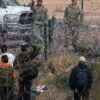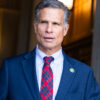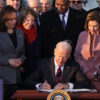From the Monthly Weather Review:
The Arctic seems to be warming up. Reports from fishermen, seal hunters, and explorers who sail the seas about Sitzbergen and the eastern Arctic, all point to a radical change in climatic conditions, and hitherto unheard-of high temperatures in that part of the earth’s surface.
The oceanographic observations have, however, been even more interesting. Ice conditions were exceptional. In fact, so little ice has never before been noted. The expedition all but established a record, sailing as far north as 81 degrees 29′ in ice-free water. This is the farthest north ever reached with modern oceanographic apparatus.
[I]t is of interest to note the unusually warm summer in Arctic Norway and the observations of Capt. Martin Ingebrigsten, who has sailed the eastern Arctic for 54 years past. He says that he first noted warmer conditions […] that since that time it has steadily gotten warmer, and that today the Arctic of that region is not recognizable as the same region […] Many old landmarks are so changed as to be unrecognizable. Where formerly great masses of ice were found there are now often moraines, accumulations of earth and stones. At many points where glaciers formerly extended far into the sea they have entirely disappeared.
The change in temperature, says Captain Ingebrigsten, has also brought about great change in the flora and fauna of the Arctic. This summer he sought for white fish in Spitzbergen waters. Formerly great shoals of them were found there. This year he saw none, although he visited all the old fishing grounds.”
These stories are among the common battle cries for climate change legislation. Warming, changing landscapes, vanishing ice and changes to animal or marine life. Here’s the kicker. The article is from November…1922! Over 87 years ago. It must have been due to all of those Cadillac five-passenger coups and Page seven-passenger touring cars on the road.
The Monthly Weather Review should reinforce two important points. When it comes to climate change, it seems the more we find out, the less we know. There are countless studies offering different empirical data on how the climate is changing, why the climate is changing and how fast the climate is changing. The warming and cooling debate is well over a century old with new evidence and new anecdotes suggesting one or the other. A Business & Media Institute report references a 1975 New York Times article with the headline: “A Major Cooling Widely Considered to Be Inevitable.”
Secondly, policies put in place to address climate change and reduce carbon dioxide are not only costly but difficult to repeal. Ethanol has turned out to be a bust (both economically and environmentally) but is nowhere close to being repealed. Billions of dollars have been spent by our federal government in the name of fighting global warming. This problem becomes much more costly when you consider the economic effects of cap and trade and Environmental Protection Agency regulations to cap carbon dioxide emissions. Even if we had implemented policies to cool the planet in the 1970s, we would most likely be coping with warming and cooling policies.



























